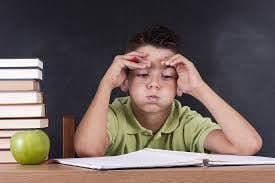August 25th, 2017

According to The Child Mind Institute and The Center for Disease Control and Prevention, anxiety disorders are the most common psychiatric disorder among adolescents, ages 13-18, and a highly prevalent psychiatric disorder among younger children ages 2-12. In school aged children, anxiety has become an increasingly common issue seen by mental health professionals in schools. Anxiety disorders affect children from all socioeconomic backgrounds, inhibiting academic achievement, and social and emotional development. Anxiety can present in various ways, and is often overlooked as the initial issue in the school setting.
Anxiety can cause students to act out behaviorally which may look like temper tantrums and defiant behavior. If anxiety is severe, the fight or flight response may kick in if a student is angry of upset, and cause them to become physically aggressive toward students and teachers.
The excessive fear and worry caused by anxiety can cause children to become distracted and be unable to focus during school. Often recognized as ADHD, students with anxiety may frequently be off task in the classroom or constantly out of their seat, unable to sit still.
Anxiety can cause students to have a need for control over their environment or situation, or feel out of control. This may look like temper tantrums and/or being unable to handle typical events such as losing a game, getting a bad grade on a test, or a change in schedule.
The excessive fear and worry caused by anxiety can interfere with a student’s ability to concentrate in school and do well on academic work, causing low academic performance on assignments and tests. Pressure to achieve or excessive fear of failing may also cause low grades and test scores.
Anxiety can present as physical health issues, as students may frequently report stomach aches, headaches, chest pains, and other physical ailments.
Students with anxiety may have difficulty participating in class, completing group work with peers, and making friends. Students with anxiety may appear extremely shy, and have a fear of being judged or making a mistake if they participate socially.
A child’s education is important, and can be greatly inhibited by anxiety disorders. The good news is anxiety is highly treatable, and children and adolescents can make great improvements with the right supports. The best approach to addressing a child’s anxiety disorder is a collaborative approach between parents, medical professionals, and school staff. In school, social workers and counselors can work with students individually, and also in small groups to teach coping strategies, ways to recognize and decrease anxiety, and facilitate positive peer interaction. Cognitive Behavioral Therapy is an effective technique used by mental health professionals in schools to help students analyze their thoughts. Teachers can accommodate students who suffer from anxiety disorders in the classroom by giving students built in breaks in the schedule, test accommodations such as the option to take a test in a quiet room or extra time.
MAUREEN FAYDASH, CLARITY CLINIC
2016 Children's Mental Health Report | Child Mind Institute. (n.d.). Retrieved October 18, 2016, from http://childmind.org/report/2016-childrens-mental-health-report/ (2016). Retrieved October 18, 2016, from http://www.cdc.gov/childrensmentalhealth/data.html
Our Services
Adult PsychiatryChild & Adolescent PsychiatryAdult TherapyChild & Adolescent TherapyCouples CounselingFamily TherapyGroup TherapyPsychological TestingTranscranial Magnetic StimulationPHP / IOP